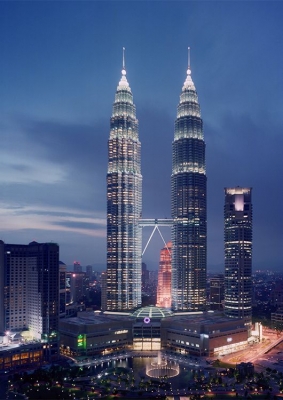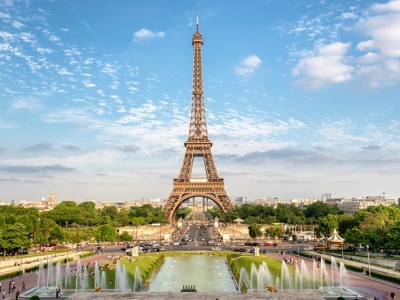
1. Russia-Ukraine war
Russia launched a large-scale invasion of Ukraine on February 24, 2022. However, Russian President Vladimir Putin called the invasion a "special military operation" rather than a full-scale war. While sending troops into Ukraine from the north, south, and east, he told the Russian people his goal was to "demilitarise and de-Nazify Ukraine". On February 28, the prosecutor of the International Criminal Court opened an investigation into war crimes and crimes against humanity. According to the U.N., a third of the population has fled Ukraine since the invasion started. Meanwhile, over 17,000 confirmed civilian casualties in Ukraine were reported till December.
2. Death of Queen Elizabeth II
Queen Elizabeth II passed away on September 8, 2022 in Balmoral Castle, Aberdeenshire, Scotland. She was the queen of the United Kingdom of Great Britain and Northern Ireland from February 6, 1952, to September 8, 2022. In 2015, she surpassed Victoria to become the longest-reigning monarch in British history. Her eldest son Prince Charles, who was the Prince of Wales, became the proclaimed King in September following the Queen's death. He is now known as King Charles III. He has become head of the Commonwealth, an association of 56 independent countries including Australia, Antigua and Barbuda, the Bahamas, and Canada.
3. Rishi Sunak becomes UK's PM
The year 2022 saw an early end to the Prime Ministership of Boris Johnson, resignation of a newly-elected PM in 45 days, and the UK getting an Indian-origin PM for the first time. In the face of scandals such as partygate and rising inflation, Johnson was forced to resign in July. During the prime ministerial election, Mary Elizabeth Truss defeated rival Rishi Sunak with 81,326 to 60,399 votes among party members. However, she quit after 45 tumultuous days in office, and former Chancellor Rishi Sunak became the third leader to enter London's 10 Downing Street in a year- in October 2022.
4. Sweden, Finland rush to join NATO
Following Russia's invasion of Ukraine, Sweden and Finland petitioned to join NATO in May 2022. Finland shares a long border with Russia, and Sweden is just across the Baltic Sea from Russia. While Sweden's application has been approved by 28 of the alliance's 30 members. Turkey and Hungary are yet to ratify Nordic nations membership in the alliance. However, Hungary has signalled it could approve Finland's and Sweden's bids in early 2023. Turkey said the countries need to take more concrete steps to cut ties with Kurdish militant groups such as Kurdistan Workers' Party (PKK) before approving the nations' entry into NATO.
5. China in lockdown
Since the beginning of the pandemic, China has been one of the toughest anti-Covid regimes in the world. The government had followed the zero-Covid policy wherein the local authorities were ordered to impose strict lockdowns even if a handful of cases were reported. People had been protesting against the strict lockdown rules for months. However, public anger increased when the lockdown rules hampered the rescue efforts during a fire incident in Urumqi. After nearly three years of snap lockdowns, border closures and financial hardship, the government in December 2022 began easing some of its lockdown measures such as allowing home quarantine.
6. Iran protests
Iran witnessed the biggest protest in years following the death of Mahsa Amini in September 2022. The country's morality police had arrested Amini for not wearing her hijab properly and sporting skinny jeans. Iranians irrespective of age, ethnicity and gender are protesting against the strict law. Meanwhile, the security forces cracked down on protesters ruthlessly. A number of journalists, lawyers, celebrities, sports stars and civil society figures have been put behind bars for supporting the protesters. By December, about 458 people, including 63 children, were killed. While two people were executed, two teenagers are facing death penalty.
7. Biden's mid-term poll win
The year 2022 was a test for U.S. President Joe Biden. The mid-term elections are held every two years for the Senate and the House of Representatives. The House of Representatives has 435 members, and the Senate (upper house) has 100. The 2022 election saw a fierce contest between the Democrats and the Republicans. President Biden's Democratic Party now holds the upper chamber of Congress by 51-49. Democrats retained control of the Senate by winning the state of Pennsylvania in November 2022. Meanwhile, the Republicans gained a stronghold over the House of Representatives by winning 221 seats.
8. Pakistan: Sharif succeeds Khan
Pakistan saw the end of the rule of Prime Minister Imran Khan, who was ousted in March 2022. Khan, the first Pakistani PM to lose a no-confidence vote, had attempted to block a no-confidence motion against him by dissolving parliament and calling for snap polls. However, Pakistan's top court ordered the motion to be held following which parliament elected Shehbaz Sharif as the new PM in April. Meanwhile, Khan blamed "foreign conspiracy" for his removal. In the by-elections held in October in three provinces, Khan won six National Assembly seats. Sharif, who succeeded him, is from the Pakistan Muslim League.
9. North Korea missiles
There was a significant rise in the number of missile tests conducted by North Korea, including one with a range long enough to hit the U.S. The country tested a variety of ballistic, cruise and hypersonic missiles. Hypersonic missiles have the capacity to fly at several times the speed of sound and at low altitudes to escape radar detection. North Korea fired a ballistic missile over Japan for the first time in five years in October 2022. In November, one of its intercontinental ballistic missiles landed in Japan's exclusive economic zone.
10. Kazakhstan protest
Several cities in Kazakhstan witnessed unrest as thousands of protesters in January 2022 took to the streets against a sharp hike in the price of liquefied petroleum gas (LPG) and rising inflation, which was closing in on 9% year-on-year the highest in more than five years. As many as 225 people were killed and many more were injured as per the official records. The Kazakh authorities imposed a nationwide state of emergency and sent military units to fight the "terrorists". President Kassym-Jomart Tokayev had ordered the security forces and the army to open fire with lethal force against the protesters.
11. Chinese missile attack in Taiwan
On August 4, 2022, China fired ballistic missiles near Taiwan as part of huge military drills to show its opposition to a visit by senior US politician Nancy Pelosi to the island. According to Taiwanese officials, China launched 11 ballistic missiles into waters around Taiwan's northeast and southwest coasts. Beijing saw Pelosi's visit as a challenge to its claims of Sovereignty over Taiwan. She was the most senior US politician to visit the island in 25 years. In September, the U.S. State Department approved $1.1 billion sale of military equipment to Taiwan, including 60 anti-ship missiles and 100 air-to-air missiles.
12. Brazil: Bolsonaro out, Lula in
Jair Bolsonaro became the first sitting President in Brazil to lose a re-election. He lost to leftist rival Luiz Inacio Lula da Silva by a thin margin, garnering 49.1% of the vote to da Silva's 50.9% in October 2022. However, former army captain Bolsonaro did not concede the election. He argued that votes from some machines should be "invalidated" in a complaint that election authorities met with scepticism. Meanwhile, his supporters continued demonstrations and torched cars and buses and tried to storm the federal police headquarters in the country's capital. They camped outside army bases for weeks, urging the military to overturn the victory of Lula.
13. Sri Lanka in crisis
Sri Lanka faced its worst economic crisis in March 2022 since its independence in 1948. The country had also defaulted on international loans. Protesters in large numbers took to the streets in the face of severe economic hardships marked by power blackouts, and shortages of fuel, cooking oil and food. They demanded the resignation of the Rajapaksa-led government. To launch a crackdown on the anti-government protests, the government imposed a state of emergency. Following months of protests and the resignation of then Prime Minister Mahinda Rajapaksa on May 9, his brother and President Gotabaya Rajapaksa fled the country on July 13.
14. Israel election: Netanyahu – again!
After five elections in three years, Israel's longest-serving Prime Minister Benjamin Netanyahu re-entered office after winning a majority in Israel's Knesset, or parliament. After the 2021 general election, Naftali Bennett joined a coalition with Yair Lapid, leader of the centrist party Yesh Atid. The coalition allowed Bennett to become Israel's Prime Minister in a two-year rotation with Lapid. However, Lapid's term, which began on July 1, 2022, was a short one as the November 2022 election brought Netanyahu once again to office. Netanyahu is the prime minister of the country's most right-wing government in history.-
15. Gorbachev, Abe no more
The year 2022 witnessed the death of the last leader of the Soviet Union Mikhail Gorbachev and former Japanese PM Shinzo Abe. Gorbachev was the President of the Soviet Union from 1990-91. His efforts to democratise Soviet Union's political system and decentralise the economy led to the downfall of communism and the breakup of the U.S.S.R. in 1991. However, his role in bringing an end to the Soviet Union's post-war domination of eastern Europe earned him the Nobel Peace Prize in 1990. Meanwhile, Shinzo Abe, Japan's longest-serving Prime Minister, was assassinated while campaigning in Nara for a parliamentary election on July 8, 2022.
16. Philippines: Marcos Jr makes it
In the Philippines, Marcos Jr became the country's President, capping off his family's decades-long quest to regain power after it was driven out in the 1986 uprising. His father, Ferdinand Marcos Sr, had ruled the country for two decades under the martial law. In May 2022, Marcos Jr won 31.63 million votes, or 58.8% of the ballots cast, the highest among the six presidents elected since the People Power revolution of 1986. Sara Duterte, daughter of Rodrigo Duterte, garnered 61.5% of the ballots in the vice-president or vice-president elected in the past 36 years.
Picture Credit : Google





